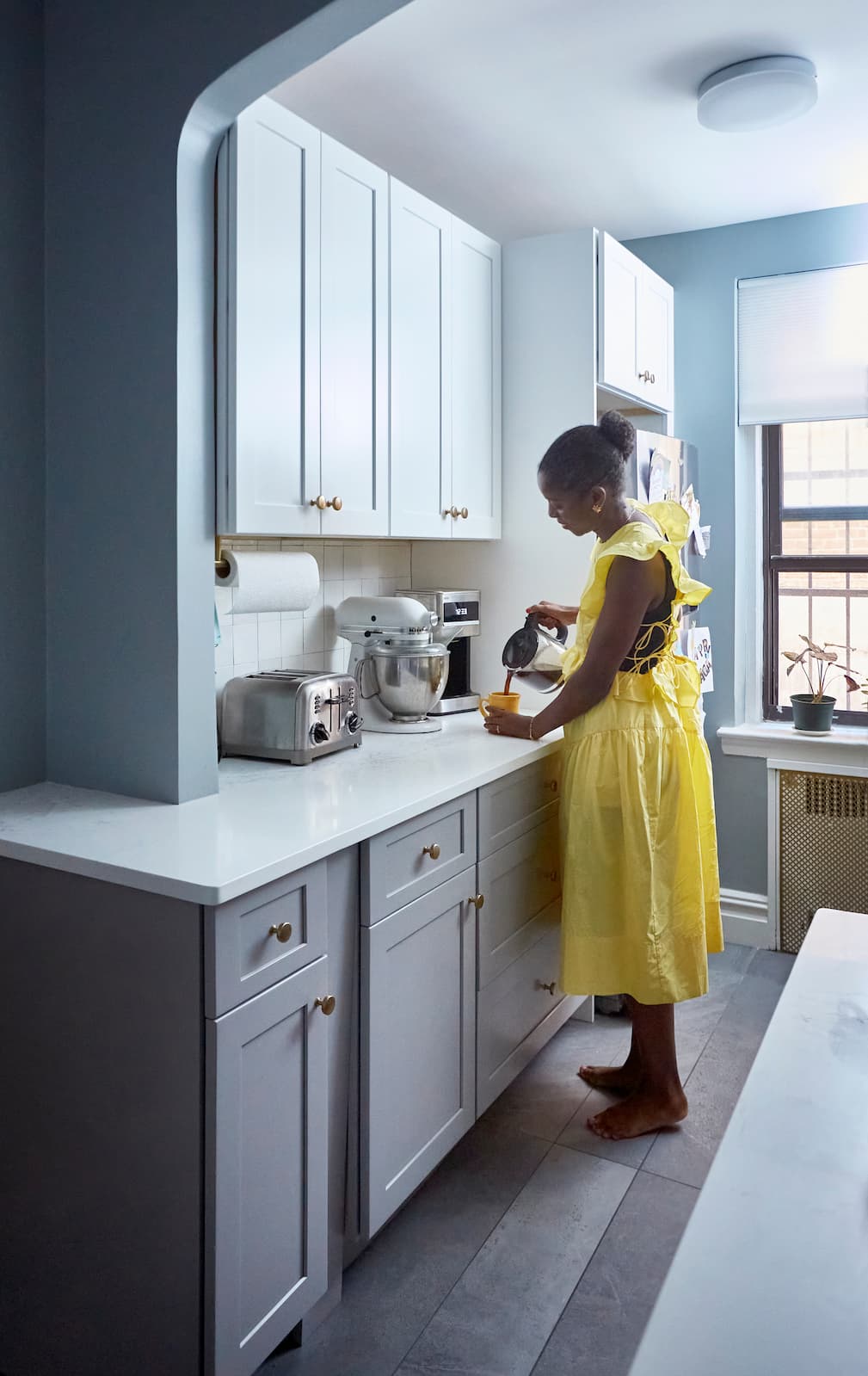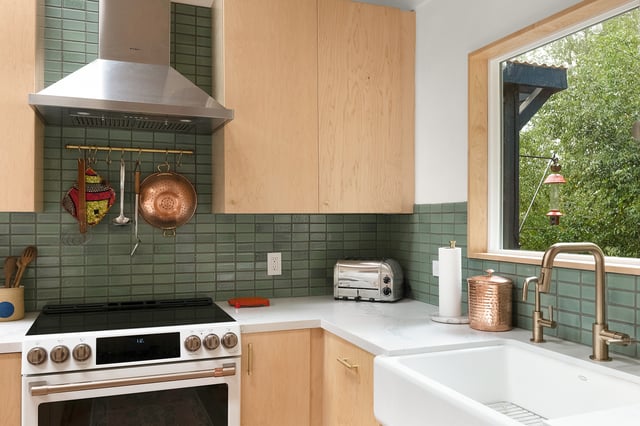
Finance
With Lower Interest Rates, Is Now a Good Time to Renovate?
09.18.2025

In This Article
On September 17, 2025, the Federal Reserve approved a quarter percentage point cut to its benchmark interest rate—the first reduction in nine months, with signals that more cuts could follow by year’s end. With rates now in the 4.00-4.25% range and discussion of additional loosening ahead, many homeowners are weighing whether it’s the moment to move forward with home improvements.
The response from homeowners has been immediate and noticeable. Applications for refinancing have already spiked—mortgage industry data now shows a 58% week-over-week increase, reflecting a renewed appetite for financial moves that could lead to monthly savings.
Beyond refinancing your mortgage, there’s growing conversation among both professionals and homeowners about whether now is the right time to seek financing for renovations, especially for projects with five- or six-figure budgets. Should you act while rates are falling, or wait? The decision is nuanced, but there are clear financial considerations that can help you determine if now is a good time to renovate.
When the Federal Reserve lowers rates, the cost of borrowing typically follows, though not always right away. It’s important to note that while a rate cut from the Fed usually leads lenders to adjust their rates, the final terms are still set at the lender’s discretion. Your actual offer can vary by loan type, credit profile, and each lender’s policies.
It’s important to note that a slight rate cut, on its own, is not the only factor to weigh when deciding whether it’s the right time to renovate. To put the change into perspective: Suppose you take out a $70,000 home improvement loan at a 7% annual interest rate, to be repaid over seven years. Your monthly payment would be about $1,056.49. If your rate drops a quarter percentage point, to 6.75%, your monthly payment decreases only to $1,047.95.
Over the life of the loan, this leads to a total savings of $716.87. While this difference is meaningful for many households, it’s a reminder that you need to consider the nuances of your broader financial picture before letting interest rate changes dictate your remodeling plans.
Choosing between fixed versus variable rate loans
As detailed in Block’s guides to financing home additions, kitchens, and bathrooms,, there are numerous avenues to acquiring the needed loans to finance your renovation. They tend to fall into one of two buckets: fixed-rate or variable rates.
Fixed-rate loans lock your interest rate for the full term, delivering payment predictability. Common examples include home equity loans, fixed-rate home improvement loans, and cash-out refinances. If you value certainty and are especially risk-averse, a fixed-rate option can secure today’s terms for years to come.
Variable-rate financing—most often a HELOC or another adjustable-rate product—typically starts with a lower introductory rate and then resets based on a benchmark index. Notably, as market rates move, your payment can rise or fall.
With some economists expecting further rate cuts this year, many homeowners value the flexibility of HELOC and variable-rate financing—you can access funds when you need them and potentially benefit from additional rate reductions. However, there is also some level of risk: if market rates rise instead, so could your subsequent payments.
Is one option better than the other at this current time? There’s no universal answer. No one can predict the exact path of rates. The choice comes down to your risk tolerance, time horizon, and how you plan to use the funds.
Choose fixed-rate if:
Choose variable-rate if:
Changes in interest rates also are just one part of the puzzle when it comes to your home project. Factors such as tariffs and supply chain disruptions have contributed to rising costs for construction and renovation materials throughout 2025, and broad-reaching inflation has only added to these increases.
What does this mean for your renovation planning? In short, costs in six months could potentially be higher than they are today. And if a wave of homeowners acts on the recent interest rate reductions, heightened demand could push prices higher still.
Here’s how to plan for future cost spikes:
Your credit score will play a critical role in what rates you’re offered and which loan products you’ll qualify for. Even as lenders respond to lower Fed rates, they continue to look for strong credit histories—especially as some consumer credit scores have fallen slightly over the past year. Improving your score in advance of applying for financing can help you secure a better deal.
Improve your credit by:
Seasonality plays a significant role in contractor availability and pricing, as detailed in Block’s guide, What's the Best Time of the Year to Renovate?. Fall tends to see somewhat lower demand compared to the spring and summer rush. In contrast, winter is often when contractors have the most availability—and some are willing to negotiate for projects that can help keep their crews working through the off-season. If you’re flexible on timing, locking in your loan and contractor agreement now—but scheduling your actual project start for the slower months—could help you secure a more competitive rate.
How to plan for fluctuations in demand:
An emergency fund is your first line of defense against unexpected costs—during renovation or beyond. While lower interest rates reduce borrowing costs, taking on a loan is still a commitment. Before proceeding, ensure you have enough savings to cover surprise expenses, both related and unrelated to your renovation project.
Plan for unexpected costs by:
Before applying for financing, it’s useful to start with a realistic, ballpark figure for your project costs. This helps ensure that you’re borrowing the right amount and gives lenders a clear reference point for your application.
Not sure where to begin? Block's renovation consultants can help you create an actionable plan, refine your budget, and connect you with reputable lenders who understand the needs of homeowners taking on renovation projects.
Not sure how to begin your renovation?
Get free, expert guidance from a dedicated Block Renovation Consultant who can help you navigate proposals, timelines, contractor selection, and more.
Book A Free Consultation
The strongest renovation decisions are rooted in clarity around your project’s true costs. Before you commit to loans or contractor agreements, it’s worth mapping out your vision and budget side by side.
With Block’s free Renovation Studio tool, you can visualize your design, test out different material options, and receive instant, customized cost estimates—giving you a transparent look at how each choice shapes your total budget.
The Studio is built for homeowners who want to feel prepared and confident before making big financial or design decisions. You can play with different layouts and finishing options while seeing real-time updates to your cost projections.

Written by Block Renovation

Renovate confidently with Block
Easily compare quotes from top quality contractors, and get peace of mind with warranty & price protections.
Thousands of homeowners have renovated with Block

4.5 Stars (100+)

4.7 Stars (100+)

4.5 Stars (75+)

Finance
With Lower Interest Rates, Is Now a Good Time to Renovate?
09.18.2025

Finance
Smart Ways to Finance a Home Addition
09.18.2025

Finance
What’s the Best Way to Pay for Home Renovations: Savings or Financing?
05.23.2025

Finance
The Top Renovations That Increase Home Value in 2025
05.22.2025

Cost
How Much Does it Cost to Renovate a Studio Apartment?
05.16.2025
Renovate confidently